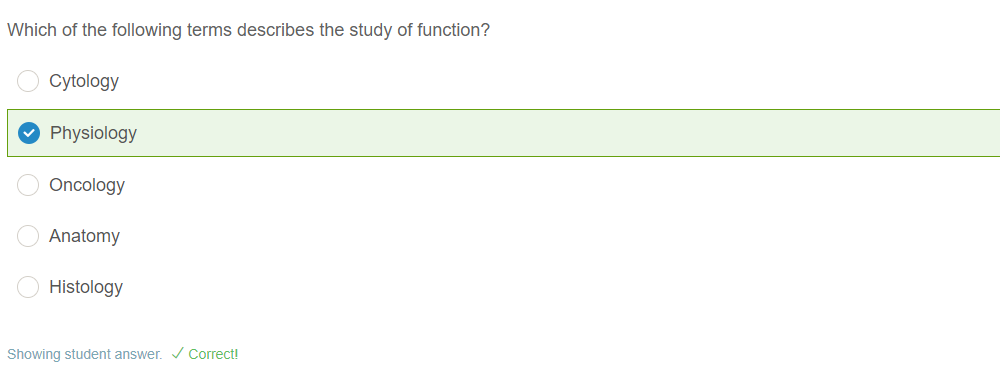QUESTIONS
Question 1
Which of the following terms describes the study of function?
- Cytology
- Physiology
- Oncology
- Anatomy
- Histology
Question 2.
Which of the following terms describes the study of body structure?
- Anatomy
- Physiology
- Oncology
- Histology
- Cytology
Question 3
Anatomy is the study of ___________. Physiology is the study of the _________________ of the body pays and how they interact with each other.
Question 4
Which of the following is an example of anatomy?
- Autorhythmic cells of the heart are able to contract on their own.
- Most nutrient absorption occurs in the small intestine.
- The bladder expands in order to temporarily store urine.
- The kidney helps regulate blood volume.
- The Human heart is composed of four chambers.
Question 5
Which of the following is an example of pathophysiology?
- The brain is composed of two hemispheres.
- The valves of the human heart prevent any potential backflow of blood.
- The brachial artery gives rise to the ulnar and radial arteries.
- The optic nerve is connected to the brain.
- Each human kidney contains 6 to 10 renal pyramids.
Question 6
Which of the following statements accurately describes the relationship between form and function? (Note: Select all that apply, as more than one answer may be correct)
- Physiology is to structure, as Anatomy is to function.
- Studying the Physiology of a body system can help predict the Anatomy of that system.
- The Function of a system has no correlation to how the system is built.
- Location, number, and orientation are associated with Anatomy.
- Anatomy is to structure, as Physiology is to function.
ANSWERS

To access full answers, 100% correct, use the purchase button below.
